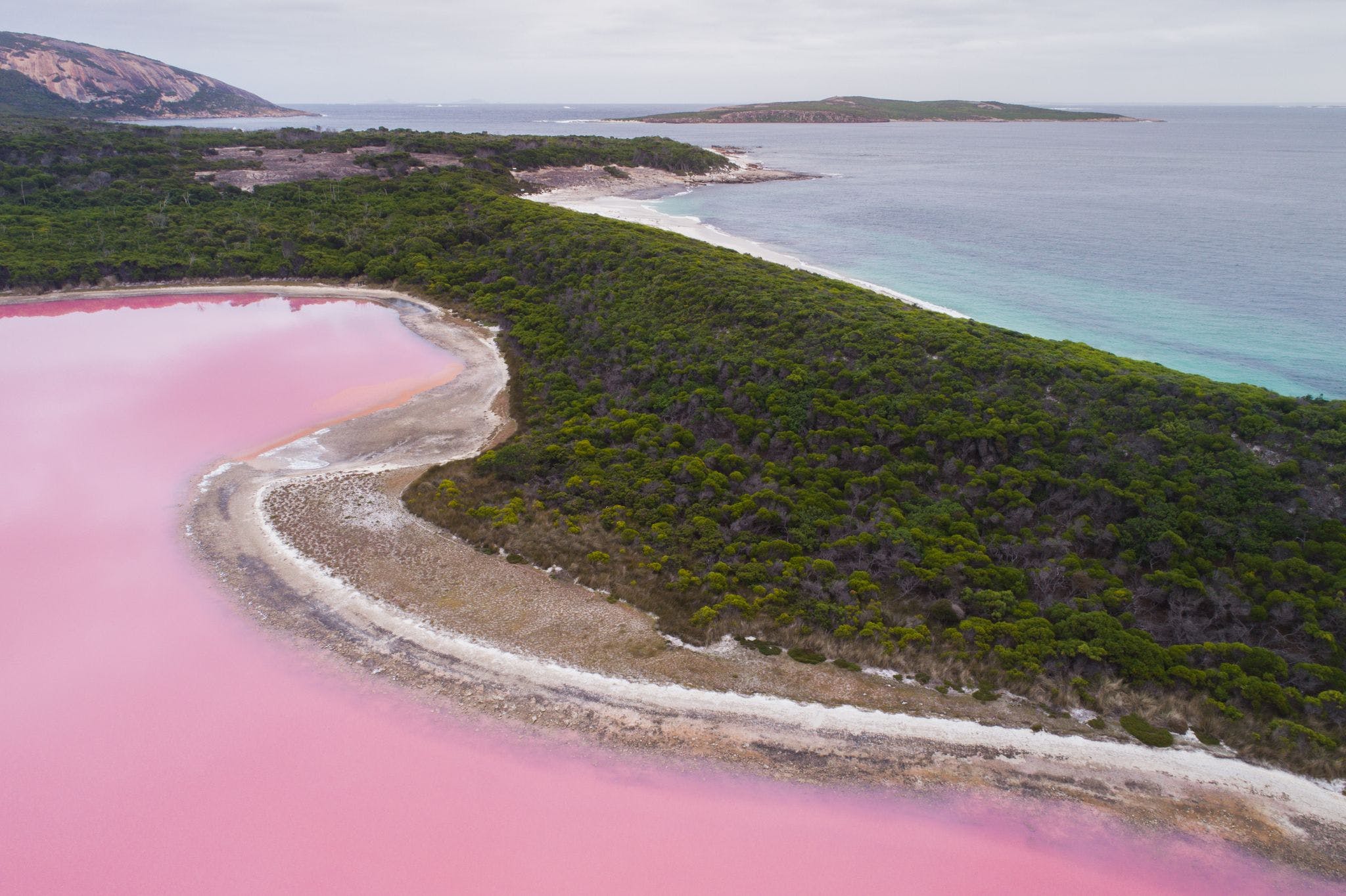Lake Hillier: Everything you need to know

Australia’s great southern land is known for many great things, but did you know one of them is an abundance of pink lakes?
From Lake Eyre, Lake Macdonnell and Lake Bambunga in South Australia, the Pink Lakes in Victoria to our own Hutt Lagoon on the Coral Coast, we’re pretty covered for these bright pink oddities. One of the most brilliant is Lake Hillier, on an island off Esperance, one that has to be seen to be believed…
What is Lake Hillier?
Funnily enough – scientists aren’t 100% sure! The pink lake phenomena around Australia are generally believed to be associated with high salinity levels, although Lake Hillier is an anomaly in that it stays its brilliant pink colour year around, as opposed to fading like most others.
Subscribe to our free newsletter!
The salinity plus the presence salt-loving algae called Dunaliella salina and pink bacteria known as halobacteria are our best guesses as to Lake Hillier’s bubble-gum pink colour. It’s not a huge lake, coming in around 600m x 250m, but it’s location on a lush green island, and right next to the bright blue waters of the Indian Ocean, make it a world-famous sight for your eyes.
Where is Lake Hillier?
It’s located on Middle Island, the largest island in the Recherche Archipelago, 11km from the coast of Cape Arid National Park and around 150km Esperance.
What to do at Lake Hillier:
Unlike the other pink lakes of Australia, Lake Hillier is only accessible by air or sea, with your best option for the most spectacular views being taking to the skies. Outside of booking a private air tour, your best option for getting on a plane to view Lake Hillier is booking through Fly Esperance, who offer Scenic Flights providing unparalleled views of the lake, along with the town itself, Cape Le Grand, Woody Island, Lucky Bay and even migrating whales (July to October).
What not to do:
Walk on the island or swim in the lake – The Recherche Archipelago is classified as a nature reserve, which means the islands are very much a look-but-don’t-touch situation!
Image Credit: Tourism WA